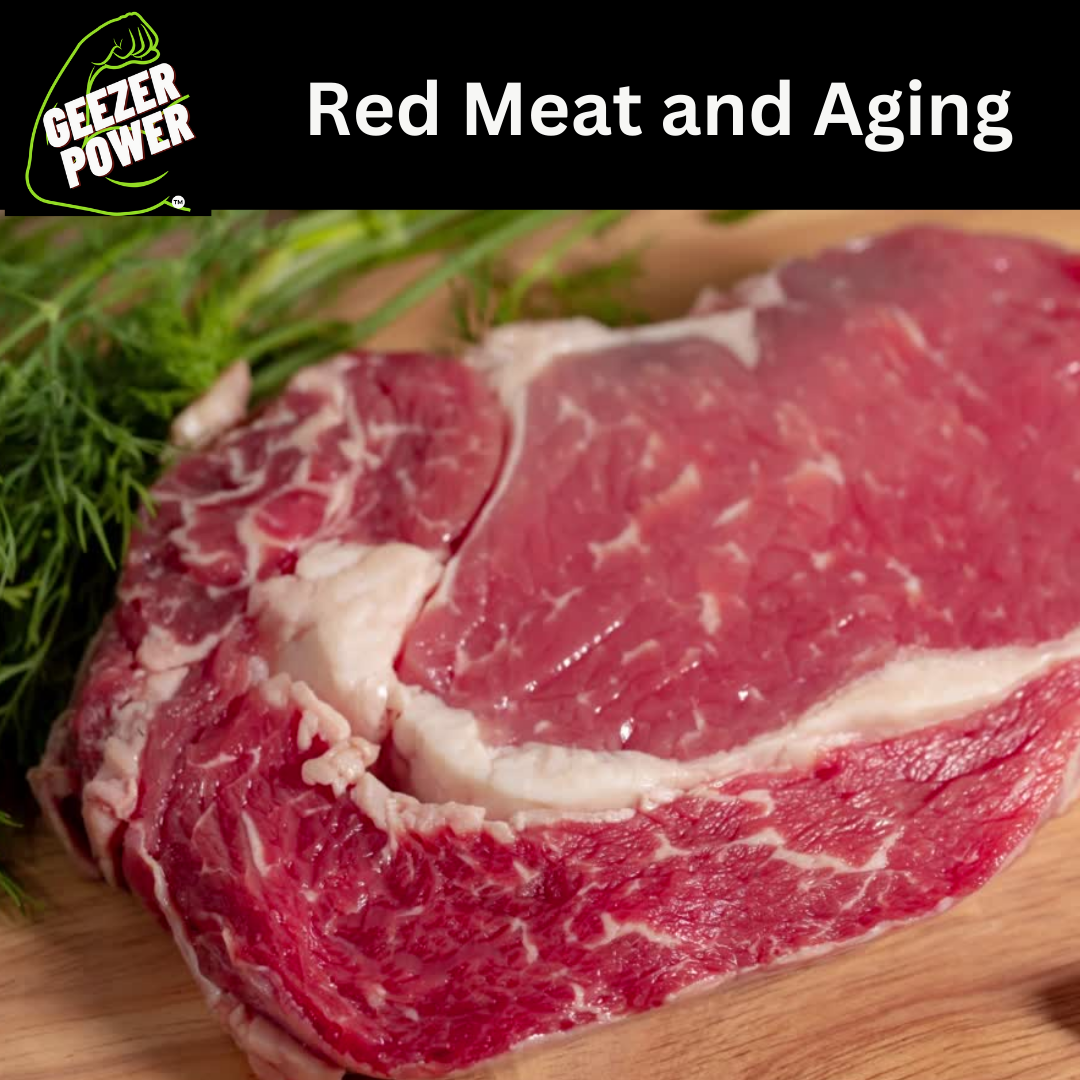
Red Meat and Aging: Debunking Myths and Maximizing Health for Seniors
In the realm of nutrition and health, the debate surrounding red meat and its impact on senior citizens has been a topic of fervent discussion. Questions arise: Is red meat detrimental or beneficial for the elderly? How can seniors make informed dietary choices to optimize their well-being as they age?
Let’s delve into the science, the facts, and the personal insights to unravel the complexities of red meat consumption in the golden years.
The Controversy: Is Red Meat Bad for Seniors?
Red meat, defined as meat that comes from mammals such as beef, lamb, and pork, has long been scrutinized for its potential health effects. The concern primarily revolves around the saturated fat and cholesterol content in these meats, which are linked to cardiovascular disease and other health issues. However, it’s crucial to examine the broader picture and consider both the potential benefits and risks associated with red meat consumption for senior citizens.
Understanding the Components of Red Meat
Beyond the muscle tissue, red meat encompasses various components that may influence health outcomes, both positively and negatively. Here are some critical elements to consider:
- Nutrient Density: Red meat is rich in essential nutrients such as iron, zinc, and vitamin B12, which are vital for maintaining cognitive function, energy levels, and overall vitality in seniors.
- Fatty Acids: Different cuts of red meat contain varying levels of saturated fats and omega-3 fatty acids. While excessive saturated fat intake is linked to heart disease, certain fatty acids like conjugated linoleic acid (CLA) found in grass-fed beef may offer health benefits.
- Other Tissue Components: Red meat includes more than just muscle. It often contains connective tissue, bone marrow, and even organs like liver, which can provide unique nutritional benefits.
Potential Health Effects and Precautions
Causes and Triggers:
Consuming red meat can lead to various health concerns in seniors:
- Cardiovascular Risks: Excessive intake of saturated fats in red meat can contribute to heart disease, stroke, and high cholesterol levels.
- Digestive Issues: Processed red meats are linked to an increased risk of colorectal cancer and other gastrointestinal problems.
- Inflammatory Response: Certain compounds in red meat, such as heme iron and advanced glycation end products (AGEs), may promote inflammation in the body.
Symptoms and Chronic Effects:
Seniors may experience the following symptoms and chronic health effects associated with red meat consumption:
- Increased Fatigue: High intake of saturated fats can lead to reduced energy levels and increased fatigue.
- Cognitive Decline: Diets rich in red meat may contribute to cognitive impairment and neurodegenerative diseases like Alzheimer’s.
- Bone Health Issues: Excessive consumption of red meat may interfere with calcium absorption, potentially affecting bone density and strength.
Prevention and Proactive Approaches
To mitigate potential risks and maximize the benefits of red meat consumption, seniors can adopt the following preventive measures:
- Moderation: Consuming red meat in moderation, focusing on lean cuts, and balancing with other protein sources like fish, poultry, and plant-based proteins.
- Variety: Diversifying dietary choices to include a range of nutrient-dense foods such as fruits, vegetables, whole grains, and legumes.
- Cooking Methods: Opting for healthier cooking methods like grilling, baking, or broiling to minimize the formation of harmful compounds like heterocyclic amines (HCAs) and polycyclic aromatic hydrocarbons (PAHs).
The Path to Optimal Aging
By adopting a proactive approach to nutrition and lifestyle, seniors can achieve a higher quality of life and minimize potential complications associated with red meat consumption. The benefits of preventive actions include:
- Improved Cardiovascular Health: Balancing red meat intake with heart-healthy fats and fiber-rich foods can reduce the risk of heart disease.
- Enhanced Cognitive Function: A diverse and balanced diet supports brain health and may reduce the risk of cognitive decline.
- Stronger Bones and Joints: Combining red meat with calcium-rich foods and regular physical activity supports bone health and mobility.
Conclusion: Embracing Healthier Choices
In summary, the relationship between red meat and aging is nuanced, and the key lies in informed decision-making and balanced dietary practices. Seniors can derive essential nutrients from red meat while mitigating potential risks by adopting a diverse and mindful approach to nutrition. By prioritizing moderation, variety, and proactive health measures, older adults can optimize their well-being and enjoy a fulfilling and vibrant lifestyle.
Remember, it’s not just about what we eat; it’s about how we nourish our bodies to age gracefully and thrive in our golden years. Let’s empower ourselves with knowledge and choices that pave the way for a healthier, happier future.
